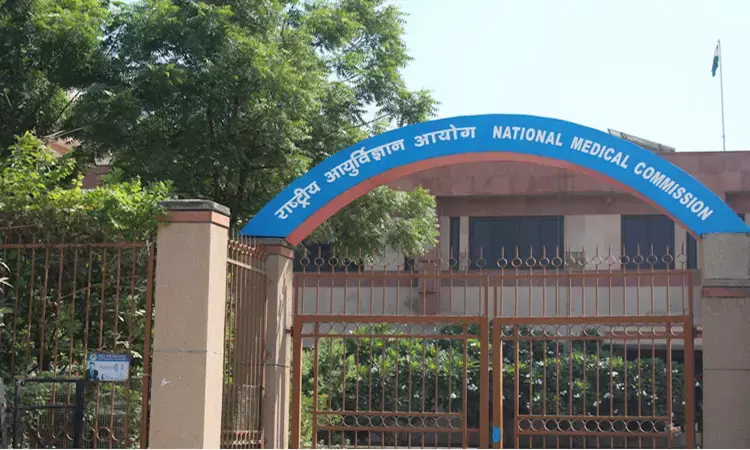- Home
- Medical news & Guidelines
- Anesthesiology
- Cardiology and CTVS
- Critical Care
- Dentistry
- Dermatology
- Diabetes and Endocrinology
- ENT
- Gastroenterology
- Medicine
- Nephrology
- Neurology
- Obstretics-Gynaecology
- Oncology
- Ophthalmology
- Orthopaedics
- Pediatrics-Neonatology
- Psychiatry
- Pulmonology
- Radiology
- Surgery
- Urology
- Laboratory Medicine
- Diet
- Nursing
- Paramedical
- Physiotherapy
- Health news
- Fact Check
- Bone Health Fact Check
- Brain Health Fact Check
- Cancer Related Fact Check
- Child Care Fact Check
- Dental and oral health fact check
- Diabetes and metabolic health fact check
- Diet and Nutrition Fact Check
- Eye and ENT Care Fact Check
- Fitness fact check
- Gut health fact check
- Heart health fact check
- Kidney health fact check
- Medical education fact check
- Men's health fact check
- Respiratory fact check
- Skin and hair care fact check
- Vaccine and Immunization fact check
- Women's health fact check
- AYUSH
- State News
- Andaman and Nicobar Islands
- Andhra Pradesh
- Arunachal Pradesh
- Assam
- Bihar
- Chandigarh
- Chattisgarh
- Dadra and Nagar Haveli
- Daman and Diu
- Delhi
- Goa
- Gujarat
- Haryana
- Himachal Pradesh
- Jammu & Kashmir
- Jharkhand
- Karnataka
- Kerala
- Ladakh
- Lakshadweep
- Madhya Pradesh
- Maharashtra
- Manipur
- Meghalaya
- Mizoram
- Nagaland
- Odisha
- Puducherry
- Punjab
- Rajasthan
- Sikkim
- Tamil Nadu
- Telangana
- Tripura
- Uttar Pradesh
- Uttrakhand
- West Bengal
- Medical Education
- Industry
Mismatch between MBBS, PG Medical Seats- a Recurring Challenge: NMC Chairman

National Medical Commission (NMC)
New Delhi: Outlining the challenges and opportunities shaping medical education in India, the Chairperson of the National Medical Commission (NMC), Dr. B.N. Gangadhar, said that the mismatch between the number of undergraduate and postgraduate medical seats is a recurring challenge, Economic Times has reported.
While there are more than 1 lakh MBBS seats available in India, the intake for postgraduate medical seats lags far behind. This creates a backlog and contributes to mental health stress among medical residents.
Dr. Gangadhar was attending a high-level policy dialogue hosted by the Centre for Social and Economic Progress (CSEP). Addressing the issue of challenges in the medical education sector in India, he opined that the country's medical education system is undergoing a major transformation, but he also opined that expansion must be thoughtful, strategic, and equitable.
Commenting on the issue of inadequate PG medical seats, Dr. Gangadhar said, "In many institutions, postgraduate training continues with the same limited number of faculty, despite managing significantly higher patient loads."
He further added, "This leads to overworked residents and compromises both training and patient care."
Dr. Gangadhar pointed out that the shortage of faculties- especially in government medical colleges running large hospitals, limits PG medical seat expansion and strains residency programs.
"We need to utilise all available beds and optimize clinical services for PG training. This would ease workloads, enhance patient care, and address faculty constraints," he opined.
Further stressing the importance of focusing on educational outcomes, instead of just infrastructure of admissions, Dr. Gangadhar added, "The real question is not just how many we train, but how well we train them. An exit exam is one way to assess the ‘product’ of medical education, but we also need better teaching, more committed faculty, and modernized college infrastructure."
He also issued a warning against the indiscriminate way of expanding postgraduate medical seats without corresponding demand or planning.
As per the latest media report by Economic Times, in a comprehensive address, Dr. Gangadhar highlighted a significant surge in medical education proposals this year, with 95 applications received by the NMC- 30 from government medical colleges and 60 from private institutes seeing to expand undergraduate and postgraduate medical seats.
"Around 120 private colleges have applied to increase their UG seats, compared to only 40 government colleges,” he noted. “This shows where the incentives lie and reflects evolving trends in medical education investment," he said.
Dr. Gangadhar also acknowledged that NMC's recent regulatory relaxations, which were aimed to ease the establishment of medical colleges, made medical education more financially viable. However, he cautioned that this must not compromise the quality of medical education and lead to regional disparities.
In this regard, Dr. Gangadhar referred to discrepancies between infrastructure and utilization. He pointed out that while some government medical colleges have up to 7,000 hospital beds, the MBBS seats are capped at 250 MBBS seats even though such institutes have the capacity to train more students.
On the other hand, he highlighted that the private medical colleges have been more aggressive in reaching the upper threshold for student intake, indicating untapped potential in the public sector.
Currently, India receives more than 25 lakh applications for just 1 lakh MBBS seats. At the eligibility stage, the candidate-to-seat-ration is 3:1. Dr. Gangadhar noted that while India's selection system is competitive, better alignment between entrance performance, faculty capacity, and hands-on-training is crucial to build a competent medical workforce.
Calling for collaborative efforts between public and private sectors, Dr. Gangadhar concluded by saying, "Medical education must evolve with a clear vision — blending scale with standards, and access with accountability."
Also Read: NBE Plans to Increase PG Medical Seats to 25,000 by 2030: Report
M.A in English Barsha completed her Master's in English from the University of Burdwan, West Bengal in 2018. Having a knack for Journalism she joined Medical Dialogues back in 2020. She mainly covers news about medico legal cases, NMC/DCI updates, medical education issues including the latest updates about medical and dental colleges in India. She can be contacted at editorial@medicaldialogues.in.


